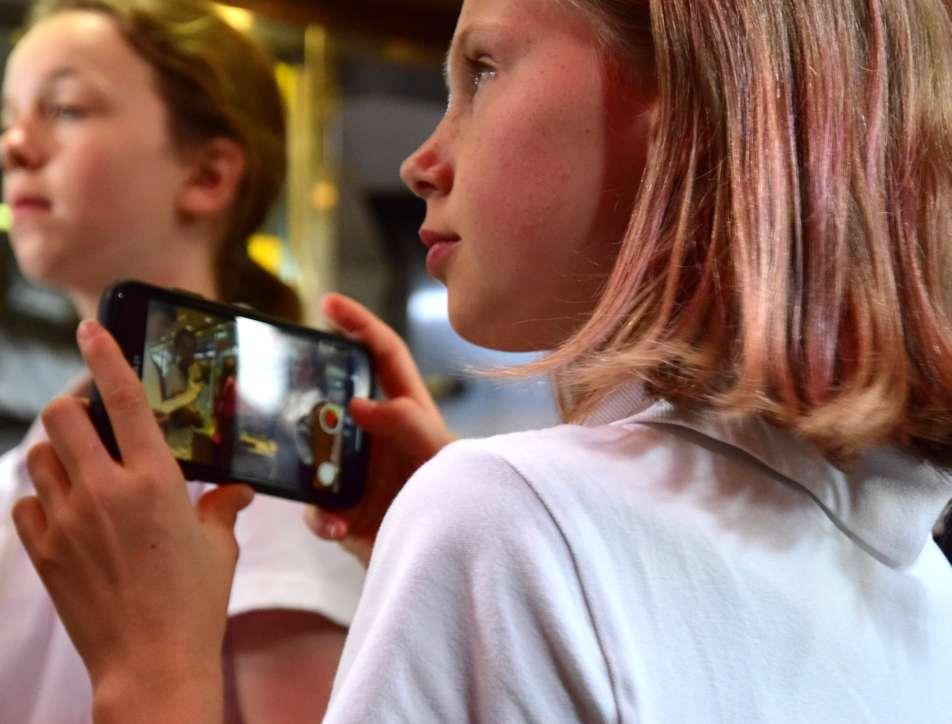
6 minute read
Session 4 . Place selection, interviews & research

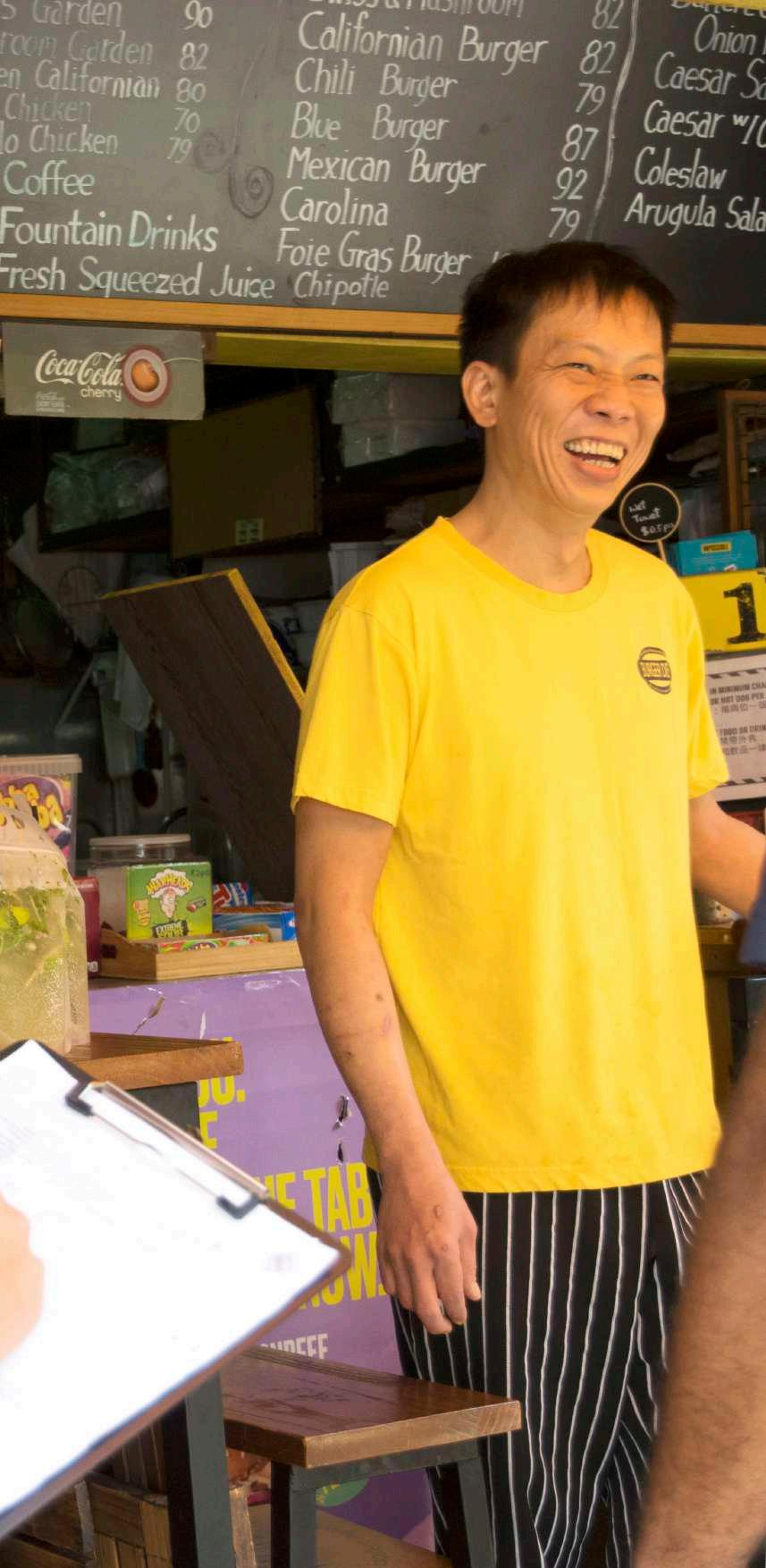
SESSION 4

PLACE SELECTION, INTERVIEWS & RESEARCH

SESSION 4 PLACE SELECTION, INTERVIEWS & RESEARCH

OBJECTIVE
• To agree on the leading neighbourhood narrative and the 25 places that best fit that narrative • To connect with local residents and shopkeepers and learn about their stories and perspectives • To practice interview skills and qualitative survey techniques

TIME SCHEDULE
DAY TWO ACTIVITY
9.00 - 9.15 9.15 - 9.45 9.45 - 10.30 BREAK 10.30 - 10.45 10.45 - 11.30 11.30 - 12.00 Homework Reflection &
preparation ‘Spirit of place’
excercise Lead narrative &
place selection Research briefing Interviews (on-site) Documentation On-line research WHY
To refresh the minds and get students ready to articulate their ideas on neighbourhood identity To agree as a group on the lead narrative To agree as a group on 20 places that best fit the lead narrative Divide students in groups bases on their skill and interest To have a more solid understanding of the history, context and local’s perspective of the 20 selected places To document the findings systematically
HOW
Students will have 10 minutes with their group to prepare a one-slide presentation that best reflects ‘the spirit of the
neighbourhood‘. Each student group has 3 minutes to present to the group. The group will then vote for the leading narrative. A student MC will read out the identified places in each category. The students will then vote for the top 4 places in each category. The top 20 places will form the foundation for rest of the project. Form new groups of 3px: (interview, photographer, note taker). Divide the 25 places over the groups. Make sure there is one Cantonese speaker in each group. \\ Outside-the-Classroom Students go out in groups and interview residents, shopkeepers, etc. to find out more about the places. Students upload the information in the shared folder. Minimum information for each place: 1 quote, 1 hashtag, 3 bullets and min 5 pictures.
See what extra information you can find on the places online
TOOLS
• Voting tokens for each students and teacher • Small box for each group to
collect votes • List of places organized by category • 3 colours paper for voting
(red, organge, green) • Briefing PPT (interview & photography skills) • Interview template • Optional: newspaper
/magazine/clippings • Interview template
• Clipboards

the romans believed that every place has a soul. they called it “genius loci”
the soul of place could lie dormant for decades, but it never disappears, decays or can be destroyed. no matter how much time passes, it stays intact, waiting to be reactivated..

notes

SESSION 4 LEAD NARRATIVE

OBJECTIVE
• To identify places that make your neighbourhood unique • To understand the concept of ‘living heritage’, including tangible and intangible heritage • To learn more about your own neighbourhood in a fun way

stories and narratives
There are always multiple layers and narratives to a place. You guys can choose which one you feel like exploring. Some suggestions:
Throw-back to …
Culinary culture trail
Street art secrets
Hidden gems
Happy places
Street names
Following the steps of… - [ a famous local resident, an old auntie, or even a cow .. ]
find your story of place
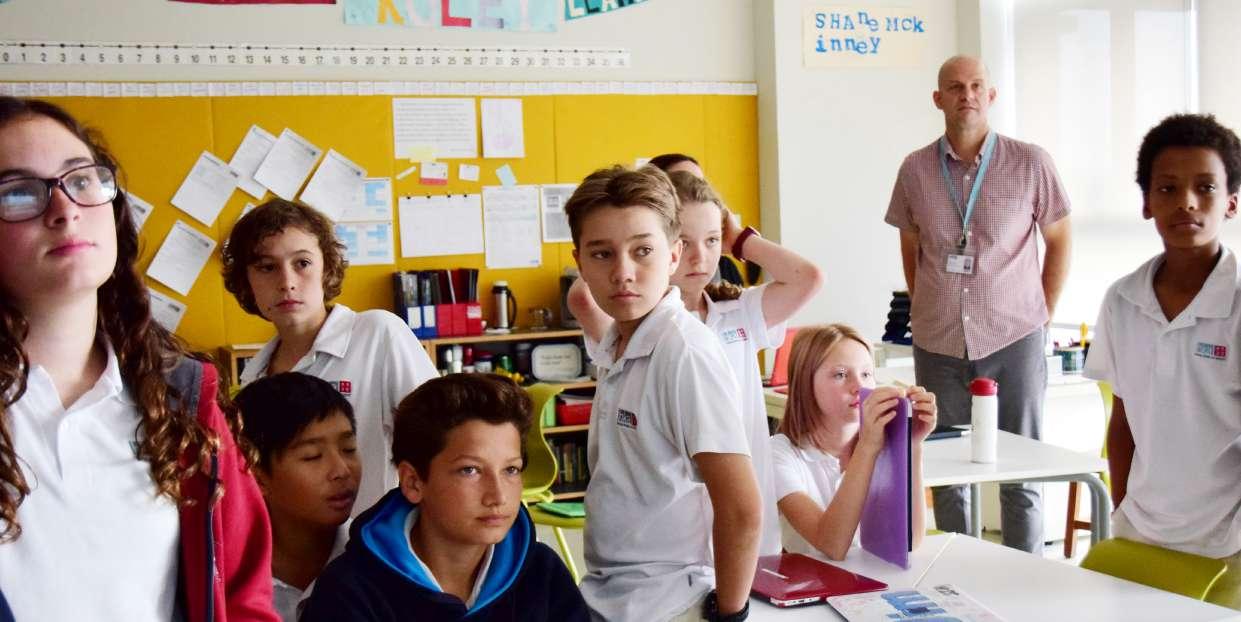
1.Groups prepare a one-slide presentation that best reflects ‘the spirit of the neighbourhood’. 2.Each group present their narrative to the other groups. 3.With the purpose to select one leading narrative for this mapping project.

SESSION 4 PLACE SELECTION

STEP BY STEP GUIDE
1.Now that you have a lead narrative, it’s time to select places that best tell that story of place. 2.A student reads out the mapped places. 3.The students then vote for the places that best suit the narrative by showing coloured cards. o Green - yes, this place is very unique / fits the narrative o Orange - not sure. o Red - no, you can find this anywhere / doesn’t match the narrative. 4.The top-20 places will form the foundation for the rest of the project.
uniqueness checklist
Can you find this store/café/restaurant anywhere else in the city? Is this an independent/ family-run stores i.e. not a chain store? If it’s a chain store, is the founding place or one-and-onlybranch in the city? Does this represent creative entrepreneurship? If this place disappears, is [the neighbourhood] still the same? How does this place reflect the spirit of place?

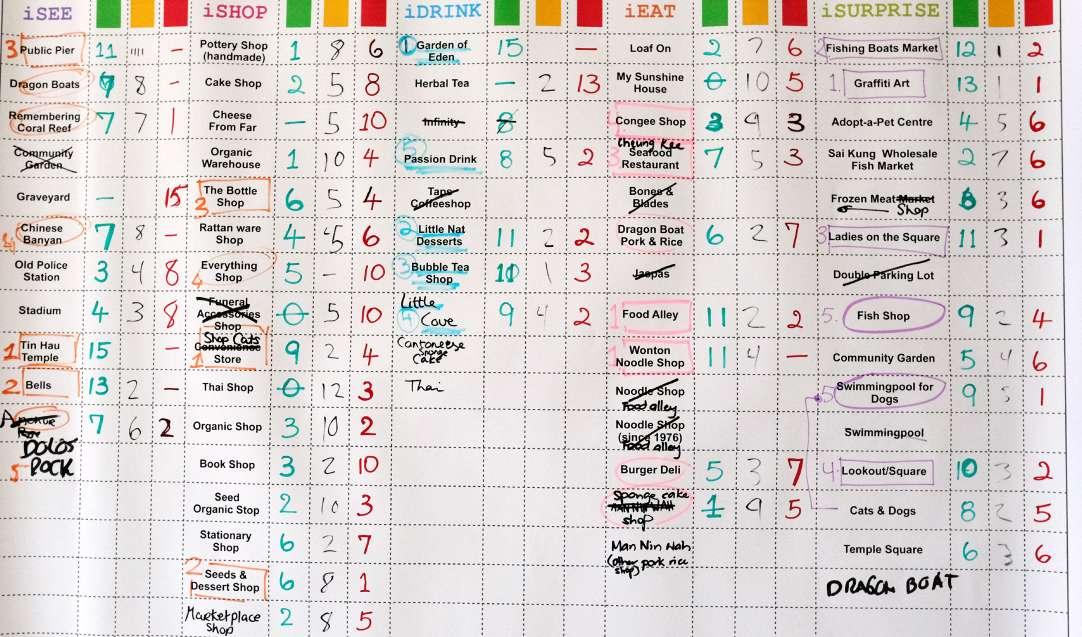

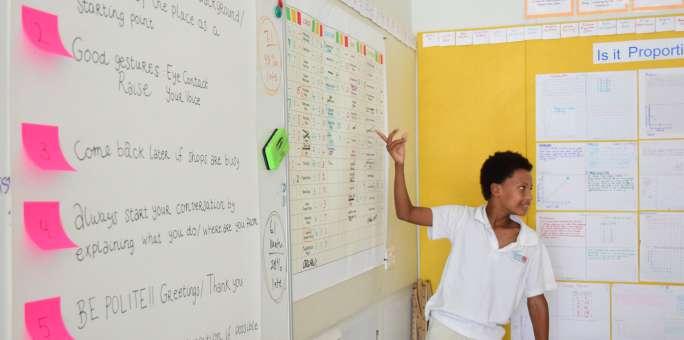

SESSION 4 RESEARCH

Insider tips! good research

• Look up the opening hours of shops before you head out, especially for old shops with limited hours. • Write down the knowledge you already have about the places, stories and anecdotes etc. • Collect information from other classmates or their (grand) parents, teachers or friends who already know these places.
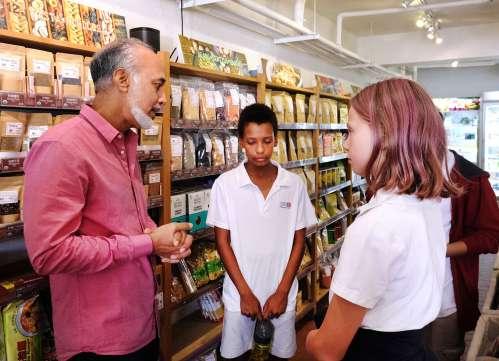
checklist

Minimum information for each place: 1 direct quote from an interviewed person 3 bullets of text with key observations 5 pictures 1 hashtag
insider tips!
Different skills - different roles
Each group has three students, roles are divided based on skill and interest: • Interviewer – likes talking, not afraid to connect to strangers, can speak & understand Cantonese • Photographer – blends in, has an eye for details • Note taker – organised, good observer

SESSION 4 INTERVIEWS

QUESTIONS TO ASK ENGAGING CONVERSATIONS COLLECTING STORIES
Questions to ask a shop owner:
• How long has this shop been operating? • Why did you start this business? • Where do your customers come from? • Why is the bestseller at your shop?

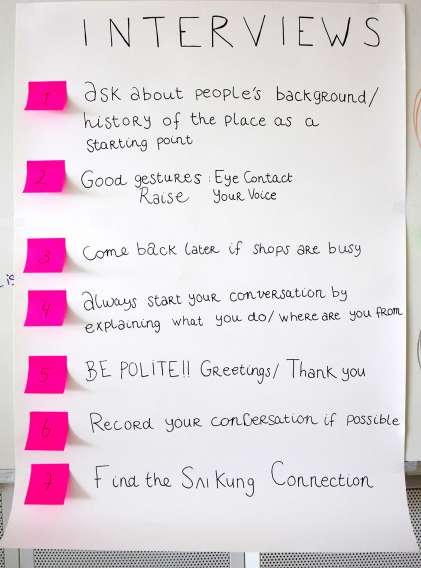
Questions to ask a resident:
• How long have you been living here? • What is special about this place? • What do you like about this neighbourhood?
Questions to ask a visitor:
• Why did you come to this place? • What is good here to eat/drink/buy/see • What is special about this neighbourhood?
